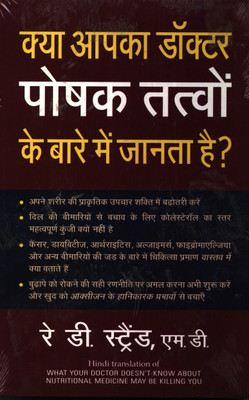

Freedom Sale ends in18 hrs : 47 mins : 24 secs
PHYSICAL THERAPY for BALANCE DISORDER PATIENTS (English, Hardcover, Dr. Anirban Biswas)
Share
PHYSICAL THERAPY for BALANCE DISORDER PATIENTS (English, Hardcover, Dr. Anirban Biswas)
Be the first to Review this product
Special price
₹439
₹550
20% off
Coupons for you
T&C
Available offers
T&C
T&C
T&C
T&C
Delivery
Check
Enter pincode
Delivery by15 Aug, Friday
?
View Details
Highlights
- Language: English
- Binding: Hardcover
- Publisher: BHALANI PUBLISHING HOUSE
- Genre: BOOK
- ISBN: 9788185578873, 8185578873
- Edition: 1ST, 2007
- Pages: 94
Services
- Cash on Delivery available?
Seller
Description
Balance disorders can be the presenting feature
or manifestation of medical conditions as diverse
as diverse as a degenerative disease of the spinal
cord, inflammation of the deep muscles of the neck,
an inflammation of the peripheral nerves of the
body (peripheral neuritis), diseases of the eyes like
refractive errors, glaucoma, weakness of the eye
muscle and other eye diseases, decreased blood
supply to the brain (vertebrobasilar insufficiency),
degenerative disorders of the brain like cerebellar
atrophy, ear diseases e.g., infection of the ears
like labyrinthitis, collection of fluid in the inner
ear (meniere’s disease), etc. Vertigo can also be the
presenting symptom of many systemic disorders like
migraine (migraine related vertigo), epilepsy (epileptic
vertigo), diabetes, thyroid disorders, anemia, cardiac
disorders like arrhythmias, neurocardiogenic
syncope, psychological and psychiatric disorders like
depression, panic disorders etc. The list of diseases
that can present just with vertigo or imbalance as
the only symptom is very long.
The different types of physical therapies that have
been found to be effective in improving balance
function are the Cawthorne Cooksey exercises, some
yogic asanas and some tai chi exercises. Both tai-chi
and yoga has caught the attention of neurotologists,
vestibular therapists and researchers of the Western
world and their efficacy in improving balance
function is now undisputed and scientifically
documented. The Cawthorne Cooksey exercises are
now accepted as the core component of all vestibular
rehabilitation programs. It is believed that tai chi
and yoga restore balance function by improving
postural stability and the emotional state of the
patient. Individually all these three forms of physical
therapies have been proved to improve and restore
balance function.
The video demonstration on the Cawthorne Cooksey
exercises, the asanas and the Tai-chi exercises
which is distributed along with this book in the form
of a CD
Read More
Specifications
Book Details
| Imprint |
|
| Publication Year |
|
| Edition Type |
|
| Book Type |
|
| Number of Pages |
|
| Net Quantity |
|
Contributors
| Author Info |
|
Translation Details
| Translated to |
|
Series & Set Details
| Series Name |
|
School Books Details
| Subject |
|
University Books Details
| Stream |
|
| Subject |
|
Be the first to ask about this product
Safe and Secure Payments.Easy returns.100% Authentic products.
Back to top






